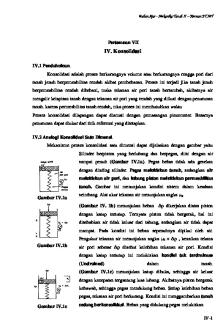Mt. St. Helens Video Questions PDF

| Title | Mt. St. Helens Video Questions |
|---|---|
| Course | Geography of Hazards |
| Institution | The University of Western Ontario |
| Pages | 2 |
| File Size | 84.8 KB |
| File Type | |
| Total Downloads | 26 |
| Total Views | 150 |
Summary
Mt. St. Helens video questions...
Description
GEOG 2152: Geography of Hazards
Video: Mt. St. Helens – Back from the Dead
1. What did the scientists do in order to monitor the volcano after they realized there was potential activity in its crater? What did they learn from doing this? - The scientists set up a time-lapse camera on a nearby ridge. - Over several days, the pictures show a dome rising in the middle of the crater floor. The volcano is oozing a sticky gray lava, cooling as it reaches the surface. - After several months, the domes grew larger.
2. What plant were the scientists surprised to find in the pumice plain? How was it able to grow in such an inhospitable area? - It was a prairie lupine, a species that typically grows high in the slopes of Mount St. Helens. It was not only growing, it was flourishing. - It is a pioneering species that has a special root structure that provides its own fertilizer. It works with bacteria to survive.
3. How did the bacteria in Spirit Lake make life impossible there? Why was the discovery of phytoplankton in the lake so important? - The bacteria rapidly consumed the oxygen, making life impossible for any air-breathing organisms including fish, amphibians and insects. - The discovery of phytoplankton in the lake was important because these plants turn sunlight into oxygen; they are the basic building block of aquatic life.
4. How do gophers help to encourage both more plant and animal life in the pumice plain? How do elk help to encourage more animal life in the same area? - Gophers enrich the pumice by burrowing their way through the ash. They mix in fresh soil and help new plants to spread. When walking through the land, the gopher-turned soils were green and full of flower and seeds. - Gophers also help to encourage plant and animal growth by creating kilometers of underground tunnels. - Elk help to encourage more animal life. When elk move across the landscape, they collapse the tunnels, creating entrance ways that salamanders and other amphibians can get access to. And once they get beneath the ground, these are very cool and moist sites that enable them to survive in an otherwise inhospitable area. And the importance of that is that it allows them to use these underground burrows as stepping stones during hot, dry weather and eventually to colonize new patches of terrestrial habitat, as well as ponds and lakes.
5. What was causing the small signals on the seismograph that the scientists called ‘drumbeats’? Why did seismic activity on the mountain stop in 2007? - Solid blocks of rock, grinding their way through the volcano, coming out onto the surface. As they do, they make small seismic signals, one just like the other, very repetitive. - These things were like skyscrapers that were being shoved out of the ground. - Seismic activity on the mountain stopped in 2007 because the lava below the mountain had finally run out of gas....
Similar Free PDFs

Mt. St. Helens Video Questions
- 2 Pages

Volcano Mount St. Helens
- 4 Pages

St Helens Smelting v Tipping
- 2 Pages

Switch Video questions
- 4 Pages

Intersexion Video Questions
- 2 Pages

FDC video questions
- 2 Pages

St. Augustine and St. Aquinas
- 4 Pages

OB Video Questions for Final
- 15 Pages
Popular Institutions
- Tinajero National High School - Annex
- Politeknik Caltex Riau
- Yokohama City University
- SGT University
- University of Al-Qadisiyah
- Divine Word College of Vigan
- Techniek College Rotterdam
- Universidade de Santiago
- Universiti Teknologi MARA Cawangan Johor Kampus Pasir Gudang
- Poltekkes Kemenkes Yogyakarta
- Baguio City National High School
- Colegio san marcos
- preparatoria uno
- Centro de Bachillerato Tecnológico Industrial y de Servicios No. 107
- Dalian Maritime University
- Quang Trung Secondary School
- Colegio Tecnológico en Informática
- Corporación Regional de Educación Superior
- Grupo CEDVA
- Dar Al Uloom University
- Centro de Estudios Preuniversitarios de la Universidad Nacional de Ingeniería
- 上智大学
- Aakash International School, Nuna Majara
- San Felipe Neri Catholic School
- Kang Chiao International School - New Taipei City
- Misamis Occidental National High School
- Institución Educativa Escuela Normal Juan Ladrilleros
- Kolehiyo ng Pantukan
- Batanes State College
- Instituto Continental
- Sekolah Menengah Kejuruan Kesehatan Kaltara (Tarakan)
- Colegio de La Inmaculada Concepcion - Cebu







